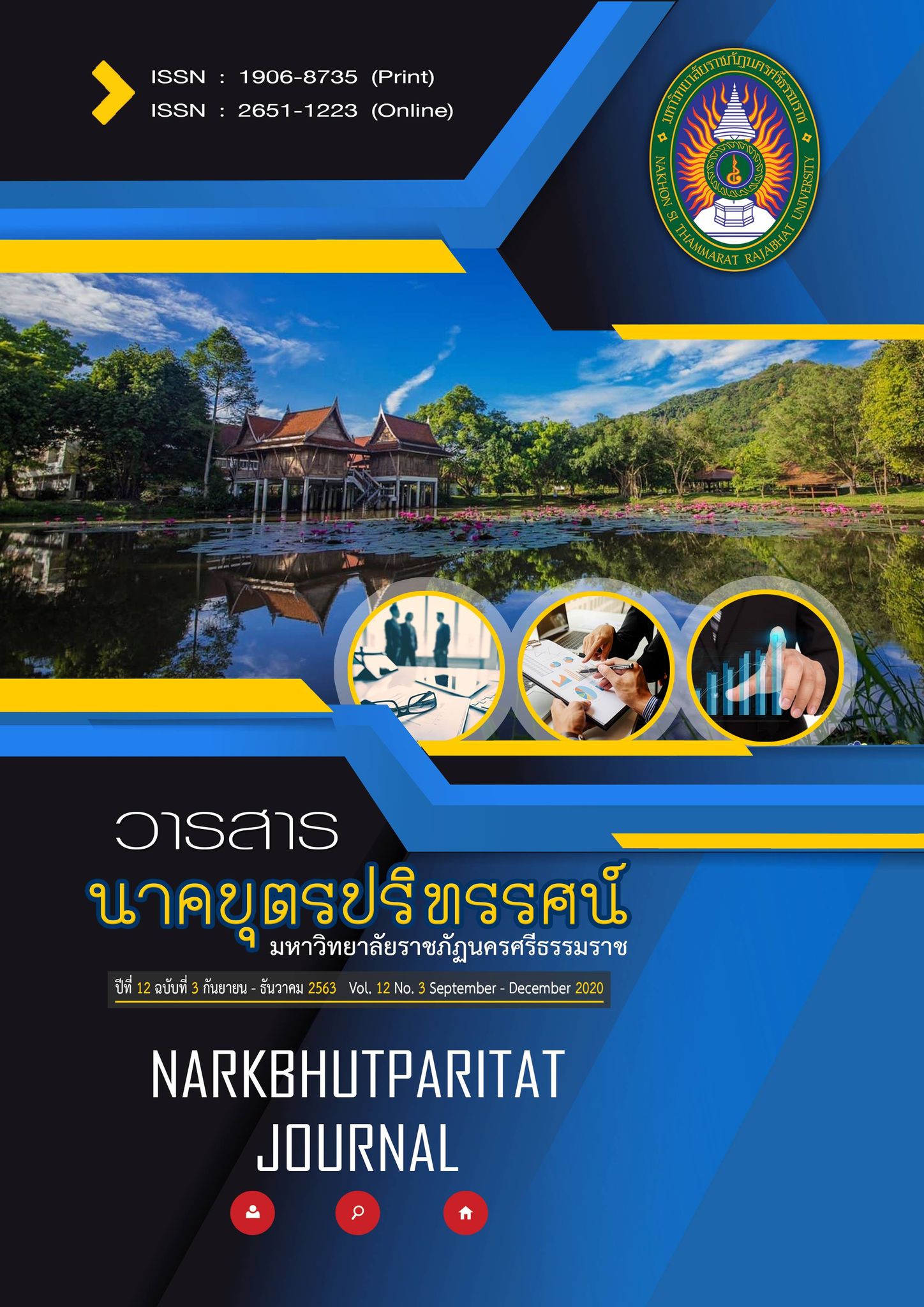Towards Developing an Organizing Framework for Describing the Meaning and Relationships of Education Terms in Education Policies: a Participatory Action Research
Main Article Content
Abstract
Quality of education depends on a clear understanding of educational terms between manifesto (policy levels) and operations. This article aims to 1) explore the feelings, emotions, and/or opinions of the participants regarding education terms 2) analyze patterns of feelings, emotions, and/or opinions of the participants, and 3) synthesize an organizing framework that link troward those terms participatory action research was conducted in this workshop which has organized and operated by the research team as a keynote speaker since 2013 to 2019. The participants were in-service teachers from both vocational and general educations. Sense information and opinion were collected through an observation and notetaking. Analysis results of major of participants expressed a negative responsibility indicating misunderstanding of education terms. The organizing framework was created as 'Pyramid of educational architecture' which was able to organize those terms systematically. Results of using of the organizing framework in the workshops since 2016 has made the participants to get the new understanding and made positive responsibility.
Article Details
References
Ampansirirat, A. and Wongchaiya, P. (2017). The Participatory Action Research: Key Features and Application in Community. Journal of Humanities and Social Sciences, Mahasarakham University. 36(6), 192-202.
Bell, D., Morrison-Love, D., Wooff, D. and McLain, M. (2018). STEM education in the twenty-first century: learning at work-an exploration of design and technology teacher perceptions and practices. International Journal of Technology and Design Education. 28(3), 721-737.
Bertram, V. (2014). STEM or STEAM? We’re Missing the Point. Retrieved 2020, January 4, from https://www.huffpost.com/entry/stem-of-steam-were-missin_b_5031895.
Chunin, M. (2015). Emotional expressions at workplace of employees. Journal of Faculty Of Applied Arts, 8(1), 106-114. (in Thai)
Damasio, A. (2003). Looking for Spinoza, Joy, Sorrow and the Feeling Brain. Alexandria, VA: A Harvest Book Harcourt.
Gerlach,J. (2012). STEM: Defying a Simple Definition. Retrieved 2020,January 6,from https://www.nsta.org/publications/news/story.aspx?id=59305.
Huasin, W.N.F.W., Arsad, N.M., Othman, O., Halim, L., Rasul, M.S., Osman, K., and Iksan, Z. (2016). Fostering students’ 21st Century Skills through Project Oriented Problem Based Learning (POPBL) in Integrated STEM Education Program. Asia-Pacific Forum on Science Learning and Teaching, 17(1), Article 3. https://www.eduhk.hk/apfslt/ download/
issue1_files/fadzilah.pdf
Khalil, N.M. and Osman, K. (2017). STEM-21CS Module: Fostering 21st Century Skills through Integrated STEM. K-12 STEM Education, 3(3), 225-233.
Kijkuakul, S. (2015a). STEM Education. Journal of Education Naresuan University, 17(2), 201-207. (in Thai)
Kijkuakul, S. (2015b). STEM Education (Part II). Journal of Education Naresuan University, 17(3), 154-160. (in Thai)
Kijkuakul, S. (2018). Qualitative Research: a Distinguished Paradigm and Misconceptions. Journal of Education Naresuan University, 20(1), 272-283. (in Thai)
Latoontheerakool, N. (n.d.). PLC: Professional Learning Community. Retrieved 2020, Janury 3, from http://www.bangkok.go.th/upload/user/00000077/SS/4.0.pdf. (in Thai)
Manee-on, S. (2017). Using Professional Learning Community Strategies in Schools. Journal of Education, Silpakorn University, 15(1), 28-39. (in Thai)
Marzano, R. J. and Kendall, J. S. (2007). The New Taxonomy of Educational Objectives. ThousandOaks. California: Corwin Press, Inc.
Office of the Education Council, Ministry of Education. (2016). STEM Education: Science, Technology, Engineering, and Mathematics Education. Retrieved 2020, Janury 5, from http://www.thaiedresearch.org/index.php/home/paperview/26/?topicid=6. (in Thai)
Sinek, S., (2009). Start with Why: How Great Leaders Inspire Everyone to Take Action. New York: Portfolio.
Siripatharachai, P. (2013). STEM Education and 21st Century Skills Development. Executive Journal, 33(2), 49-56. (in Thai)
Sirindhorn Science Home (SSH). (n.d.). Fabrication Lab. Retrieved 2019, October 23, from https://www.nstda.or.th/ssh/home-fab-lab.html. (in Thai)
STEM Education Thailand. (2014). Introduction to STEM Education. Retrieved 2020, January 5, from http://www.stemedthailand.org/wp-content/uploads/2015/03/newIntro-to-STEM.pdf.pdf. (in Thai)
Suwanich, C. (2017). STEM Education and Learning Management for Teacher Student to Provide 21st Century Learner’s Characteristics Under Thailand Policy 4.0. Journal of Education, Silpakorn University, 15(1), 18-27. (in Thai)
Vehachart, R. (2018). Monitoring and Evaluation Development Activity of Professional Learning Community (PLC) in the Southern Network, founded by the Teachers Council of Thailand in 2016. Veridian E-Journal, Silpakorn University, 11(1), 2099-2115. (in Thai)


